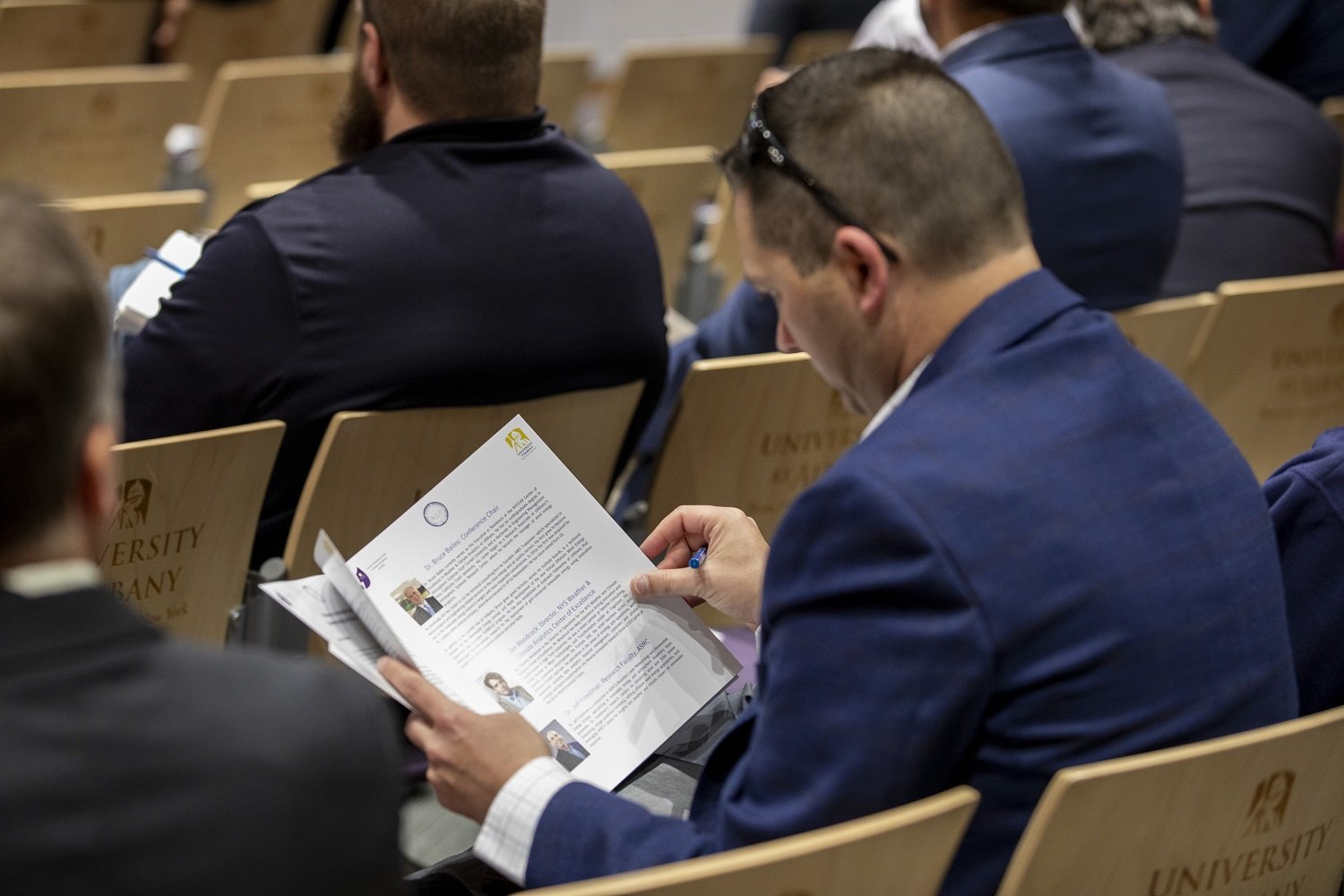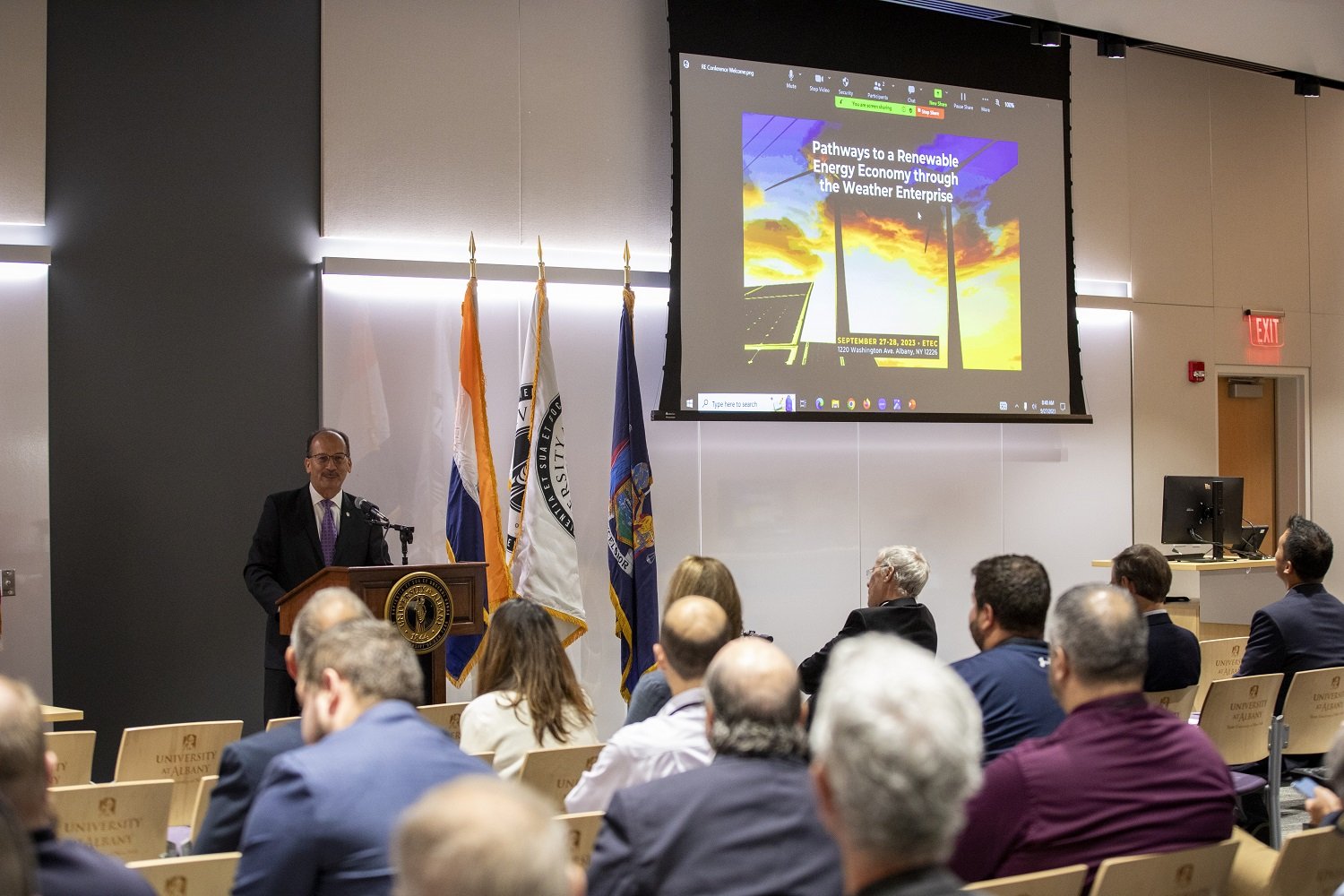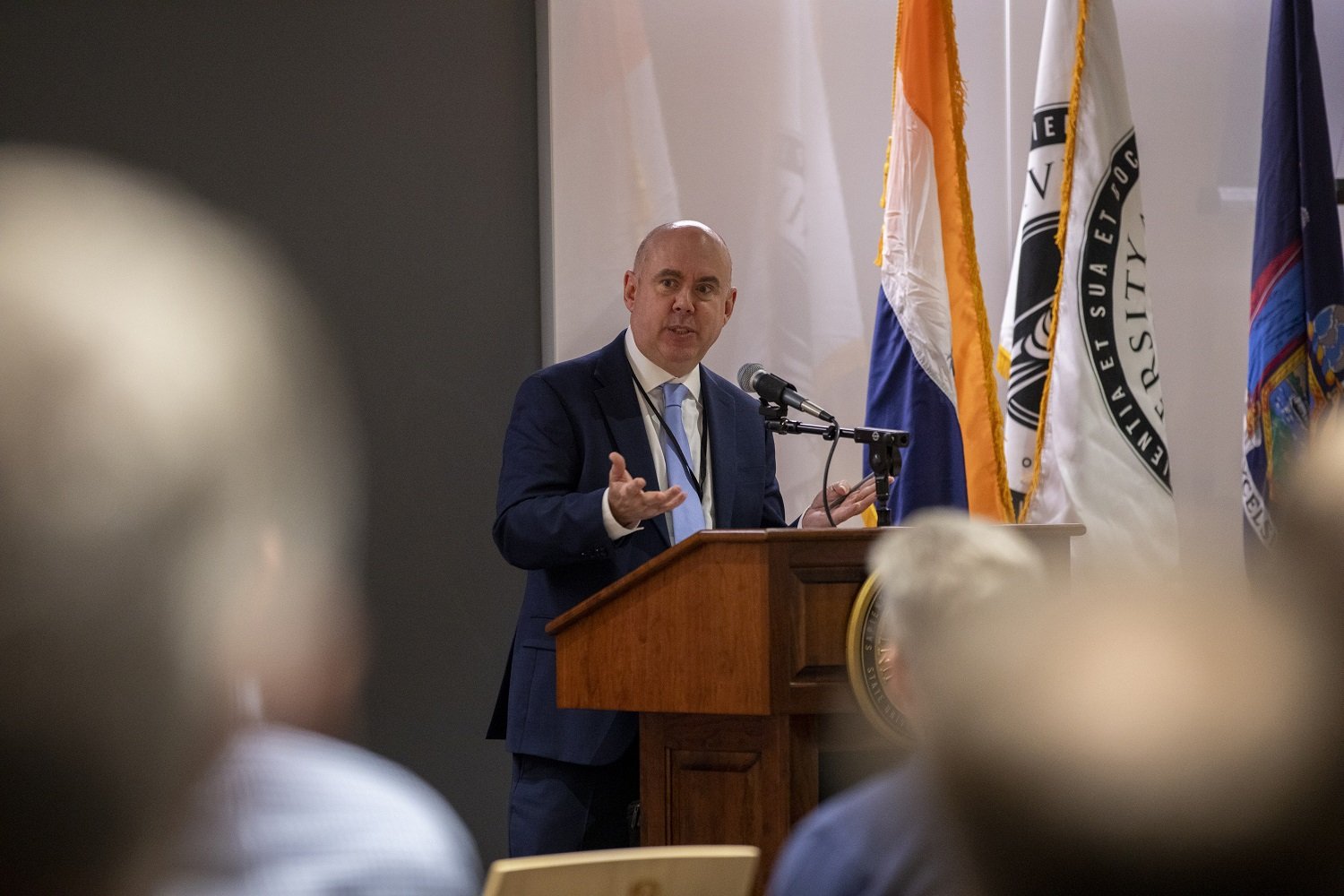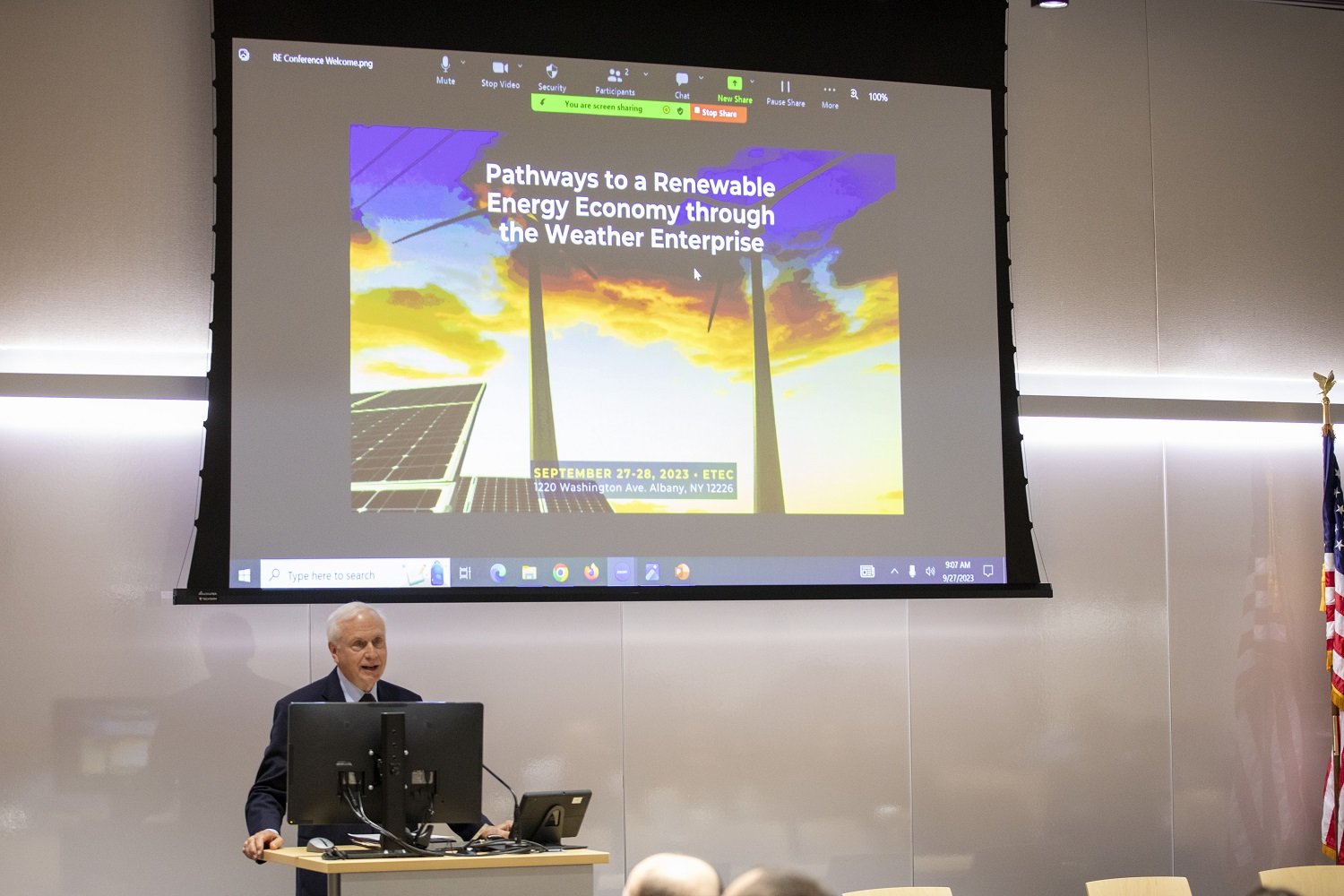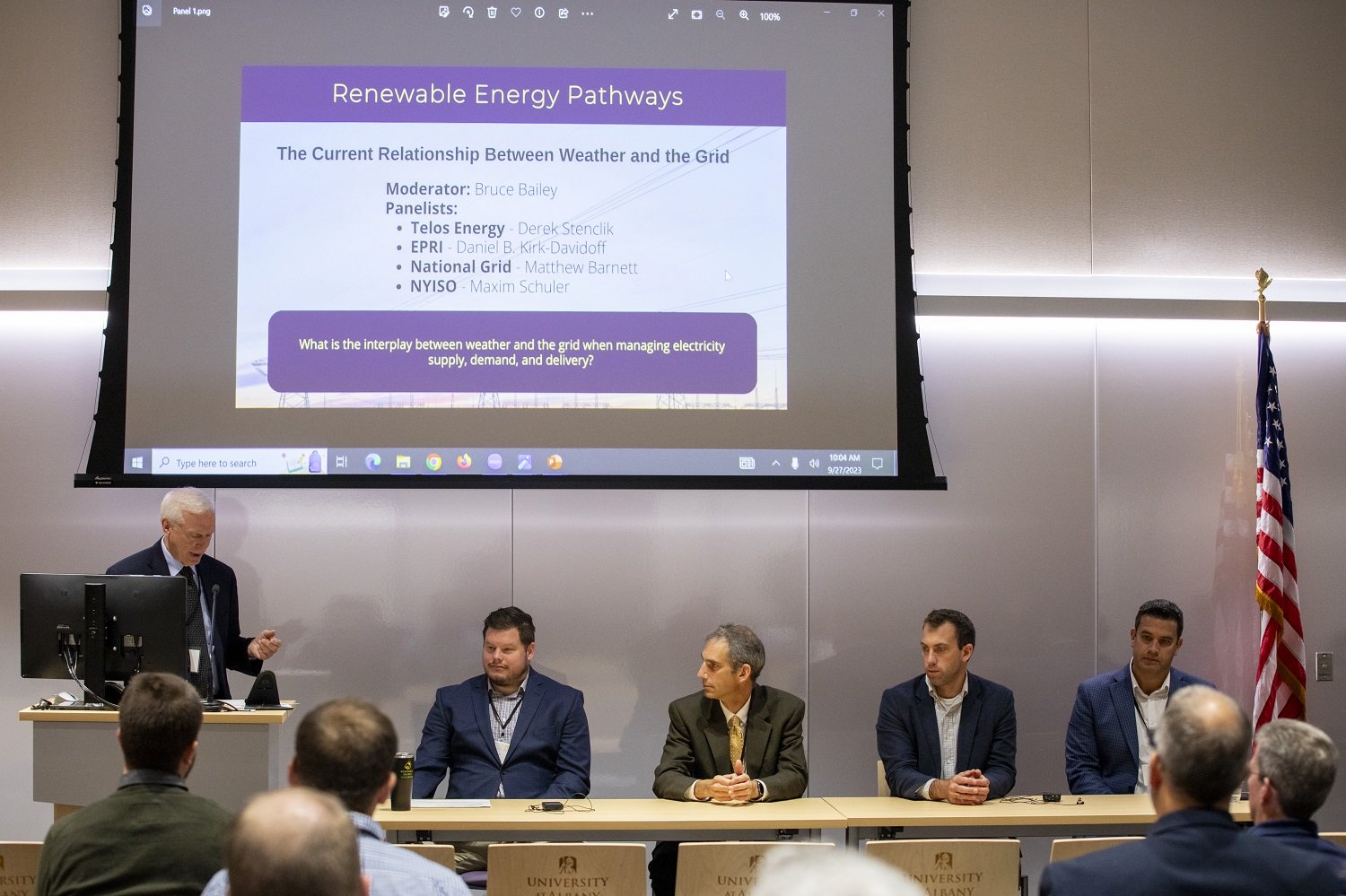UAlbany Hosts Industry Leaders, Researchers for Pathways to Renewable Energy Conference
By Mike Nolan
ALBANY, N.Y. (Oct. 3, 2023) — The University at Albany welcomed more than 130 attendees last week to explore the role that weather research and technology will play in the renewable energy transition.
The conference, “Pathways to Renewable Energy Economy through the Weather Enterprise,” included two days of panel discussions at the ETEC research and development complex, which houses all the University's weather and climate researchers, along with faculty at the College of Emergency Preparedness, Homeland Security and Cybersecurity.
Topics of focus included:
- The role of the weather enterprise in support of the expansion of renewable energy.
- Requirements and concerns among key stakeholders as they perform their roles during this transition.
- Technical challenges and opportunities associated with different weather and renewable energy technologies, energy storage, and grid integration.
- Innovations and collaborations necessary to ensure a sustainable transition to a renewables-dominant future.
The conference was open to energy industry executives, along with leaders in government and academic researchers.
“This conference is an important opportunity to bring together the scholars, public entities and private enterprises that will ensure renewable energy’s success,” said UAlbany President Rodríguez, who offered opening remarks.
“The University at Albany is, thanks to the combined strength of research in our Atmospheric Sciences Research Center and the Department of Atmospheric and Environmental Sciences, one of the largest atmospheric sciences programs in the nation, and uniquely suited to host this annual event.”
Empowering the Energy Industry
UAlbany’s Weather-Climate Enterprise hosts close to 120 faculty, researchers and staff, the largest concentration of atmospheric, climate and environmental scientists in New York, and one of the largest in the nation.
Among its growing areas of research is the intersection between weather, climate and the energy industry.
In August, UAlbany and UConn announced the launch of a new Center for Weather Innovation and Smart Energy and Resilience (WISER) that will leverage the research and expertise at both institutions to create advanced weather- and climate-based solutions for the energy industry.
WISER’s research will focus on renewable energy (solar, hydro, and wind), power outage management, electrical grid resilience brought on by extreme weather, and ways climate change impacts power producers and power distributors. To date, 14 companies including IBM, Eversource, National Grid, and Avangrid have elected to join WISER as industry partners.
New York State Electric & Gas and Rochester Gas & Electric also announced plans in 2021 for a new partnership with the two institutions to develop a customizable outage prediction system that can enhance storm preparedness and response efforts for utility companies.
In addition, another partnership between UAlbany and IBM researchers is examining weather and climate impacts on water, transportation and renewable energy systems in New York.
“With a rapidly changing climate and increased focus on the transition to clean energy sources, now is the time to advance research and technology that can improve power grid efficiency and reliability,” said Chris Thorncroft, who directs UAlbany’s Atmospheric Sciences Research Center. “We are proud to play a lead role in bringing together academic researchers, government agencies and industry partners to help safeguard the energy industry now and in the future.”
Pathways to Renewable Energy
Last week’s conference was chaired by Bruce Bailey, the executive in residence at UAlbany’s Center of Excellence in Weather and Climate Analytics (COE), with support from Jan Woodcock, director of operations at the COE.
John Williams, who was appointed last October as the executive vice president for policy and regulatory affairs of NYSERDA, offered the keynote address.
"As a result of the push for broader electrification and more renewable energy, our electricity supply is becoming increasingly weather sensitive," said Bailey. "This trend makes accurate weather data and forecasts more critical than ever."
Photos: Brian Busher





